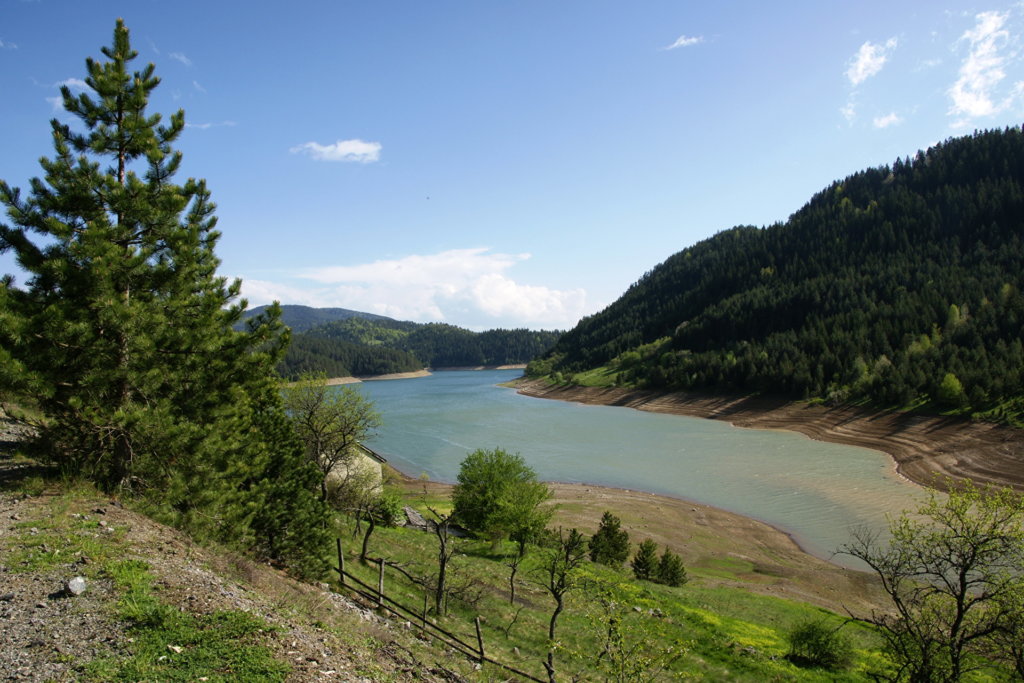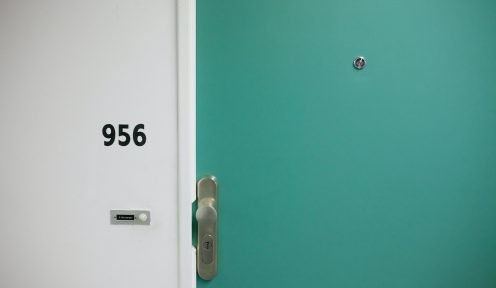
02.03.2020
Real Estate in Serbia
Registries
Data on real properties is maintained in the publicly available Cadastral Registry. The Cadastral Registry contains both “technical” and “legal” data on immovable properties.
Ownership rights over land or buildings are generally obtained upon registration of the right in the relevant registry (the Cadastral Registry). Acquirers are deemed to be aware of all matters which are registered. In practice, it is considered acceptable to acquire a title from an unregistered owner and the registries will register such title, if there is sufficient evidence linking the acquirer with the currently registered owner as the previous transferor.
Apart from real estate in the narrow sense (land and buildings), the Cadastral Registry also contains a cadastre of grids, which is supposed to contain data on waterworks, sewage and drainage, heating, electro-energy, telecom, oil and gas grids, respectively. The cadastre of grids is not yet fully operational, since not all of the relevant data on the existing grids has been registered in it.
The ownership transfer document must be in written form, with signatures authenticated before the notary public. The document must contain explicit consent of the transferor that the acquirer may be registered as the owner (clausula intabulandi).
Apart from real estate in the narrow sense (land and buildings), the Cadastral Registry also contains a cadastre of grids, which is supposed to contain data on waterworks, sewage and drainage, heating, electro-energy, telecom, oil and gas grids, respectively. The cadastre of grids is not yet fully operational, since not all of the relevant data on the existing grids has been registered in it.
Buyer and seller liability
The seller is liable to the buyer in case there are any claims by third parties which may exclude, diminish or restrict the rights of the buyer acquired from the seller. If such claims arise, the seller is obliged to protect the seller. This means any assistance which would result in rejection of the claim or right of the third party. If not, the sale agreement is considered automatically terminated by law and the buyer is entitled to a compensation of damages. The seller’s liability may be contractually restricted or excluded, except in cases when the seller was aware of the defect.
The seller is liable for the material defects in case, for example, that the property is not fit for regular use, or the property is not fit for the special purpose of which the seller was aware, or the property does not have the characteristics explicitly or implicitly agreed by the parties.
This seller’s liability may result in the automatic termination of the agreement, in case the seller failed to remedy the existing imperfections in the additional term provided by the buyer. The buyer is also authorised to require a compensation for damages
In addition, according to the Serbian Law on Contracts and Torts, when a certain pool of assets is being transferred, together with the assets, the buyer also becomes jointly and severally liable alongside the seller for all liabilities in relation to that pool of assets, up to the value of the assets transferred.
Rights of foreigners to acquire real estate
A foreign entity can purchase construction land and buildings in the Republic of Serbia necessary for its business operations, subject to reciprocity, or, as the case may be, in accordance with the terms set out in a treaty between Serbia and the country of the foreign entity. Foreigners are explicitly banned from acquiring ownership of agricultural land.
If a foreign entity establishes a subsidiary in the Republic of Serbia, such a subsidiary is treated equally to any other local entity acquiring land and buildings, regardless of the origin of the founder or its controlling share. This means that foreign persons and entities may indirectly own real estate in the Republic of Serbia through their Serbian subsidiaries without any distinguishing limitations.
It can be expected that the regime of foreign ownership of real estate in Serbia will be further liberalised in the coming period. The Stabilization and Association Agreement between Serbia and the EU (the “SAA”), which entered into force in September 2013, prescribes that, within four years from the entry into force of the SAA, Serbia shall progressively adjust its legislation concerning the acquisition of real estate on its territory by nationals of EU Member States, to ensure the same treatment as compared to its own nationals.
Construction permits
- Urban planning
The issuance of building permits is conditional on the existence of a sufficiently detailed urban plan. Such plans are adopted by the relevant authorities for the state, regional or local level. In order to prevent the situation where the investor cannot obtain a building permit due to inaction of the state body which is supposed to adopt the required urban plan, it is under certain conditions possible to obtain the permit even without such urban plan, in accordance with the Planning Law.
The most notable recent developments in this area are that in 2016, when the City of Belgrade adopted a new General Urban Plan and the Plan of General Regulation. In addition, Belgrade also adopted detailed plans of regulation for certain parts of the city, with more such detailed plans on the way.
- Building permits
To commence construction works, the developer must obtain a construction permit from the relevant authorities.
In 2014, amendments to the Planning Law significantly changed the procedure of issuing building permits, simplifying it considerably. Now, most of the documents that an investor needs to obtain from the relevant authorities are issued in a uniform procedure, with the objective of enabling the investor a one-stop-shop in this process. Another important novelty is the introduction of an electronic system of application for the necessary building permits – even though the system is relatively new, it has come into life and building permits are now being issued electronically.
The introduction of the new system has had very positive effects in practice – during the period of March-December 2015, when the application of the new system started, the number of issued construction permits rose by a third compared to the same period in 2014. Further, 2015 saw a rise in the construction industry output of around 20%, which is significantly higher than the increase of Serbia’s total GDP for that year (which was around 0.8%). This is a sign that the Serbian construction industry is in expansion and that the state is resolved to further foster this growth by cutting the red tape surrounding the issuance of building permits.
In general, in order to obtain a construction permit, the developer must have a proper title to the land on which he intends to build (the right of lease or the right of ownership). After the 28th of July, 2016, the right of use is no longer considered as the proper title for obtaining a construction permit – holders of such rights must first convert their rights of use to ownership (or enter a long-term lease) in order to obtain the necessary permits.
The competent authority needs to issue a construction permit within five working days from the date of application for such a permit. A construction permit ceases to be valid if, within two years as of its issuance, the investor does not commence construction works. As a rule, a construction permit also ceases to be valid in cases where the investor does not complete the construction and does not obtain a usage permit for the new structure within five years from the issuance of the construction permit. An additional two year extension may be granted if the investor shows that a minimum of 80% has been constructed and/or that that the constructed building is in such state which allows the connection of the building to the external infrastructure network. If these deadlines are not observed, the investor is supposed to pay the property tax for the building in the entirety, as if the building was completed in accordance with the issued construction permit, until a new construction permit is issued for that location.
Once the building is completed, the competent technical commission is required to assess whether the building was completed in accordance with the technical designs, permits and consents. The technical commission is engaged by the investor. In case of a positive assessment by this commission, the investor can apply for a usage permit (necessary for the use of the constructed building). If the competent body does not decide on the request within five working days of the application, the constructed building can be used even without such a permit, provided that the assessment of the technical commission was positive.
Once the usage permit has been obtained, the authority which issued the permit ex officio registers the right of ownership in the Cadastral Registry.
Mortgages
There is a duality of legal regimes for mortgages in the Republic of Serbia. The law differentiates between court enforceable mortgages and the, so called, out-of court enforceable mortgages. An out-of-court mortgage was introduced in 2005 by the Mortgage Law, and provides for a more efficient enforcement procedure than is the case with mortgages created in court procedures – based on mortgages enforceable out of court, claimants are authorised, under certain conditions, to independently sell the mortgaged properties, while the enforcement of mortgages created in court procedures involves a number of formalities.
Under the Mortgage Law, it is also possible to establish a mortgage over buildings undergoing construction. Such mortgages can be established and registered after obtaining a construction permit. This kind of mortgage is a security which is regularly used by the banks in financing construction projects. Once the structure is fully constructed and registered in the real estate registry, the registration of the mortgage over such constructed structures is performed simultaneously (unless the secured obligations are settled in the meantime and the mortgage is deleted). Mortgages are registered on the basis of relevant documents (e.g. mortgage agreement) which, among other things, have to contain a clear statement of the pledger allowing the establishment of a mortgage over certain property.
Expropriation
A property may be expropriated or ownership restricted if required in the public interest, in accordance with the Law on Expropriation. The public interest for expropriation may be determined by the law or by a Government decree for specific development projects in the areas of: education, health care, social welfare, culture, water distribution, sports, traffic, energy and utility infrastructure, state, provincial and municipal institutions, defence, environment and disaster protection, mineral resources exploitation as well as public housing projects. In case of expropriation, market price compensation is payable to the person whose property is the subject of expropriation.
Restitution
In October 2011, the Republic of Serbia enacted the long expected Law on the Returning of Seized Property and Indemnification (the “Restitution Law”). The Restitution Law regulates the conditions, manner and procedures for returning of and the compensation for property that was taken from individuals and certain legal entities after the 9th of March, 1945, in the territory of the Republic of Serbia and then transferred to the national, state, social or cooperative property on the basis of agrarian reform, nationalisation, sequestration and other regulations. The Restitution Law provisions apply to land, buildings and movable assets, as well as to companies that were seized in the past.
The in-kind restitution is set as the main principle. Where it is not possible, the state is to provide compensation through the issuance of government bonds. The maximum amount that one may receive as compensation is limited to EUR 500,000. Also, 10% of the compensation is payable in cash, once the decision on the returning of the property becomes final.
Nationalised property which was in private ownership at the time of entry into force of the Restitution Law is not subject of restitution in kind (only compensation from the state is available). This includes property acquired in the privatisation process.
The in-kind restitution is set as the main principle. Where it is not possible, the state is to provide compensation through the issuance of government bonds. The maximum amount that one may receive as compensation is limited to EUR 500,000. Also, 10% of the compensation is payable in cash, once the decision on the returning of the property becomes final.
Nationalised property which was in private ownership at the time of entry into force of the Restitution Law is not subject of restitution in kind (only compensation from the state is available). This includes property acquired in the privatisation process.
The procedure for the return of seized property and indemnification is conducted before the Restitution Agency (as the first instance body) and the Ministry of Finance (as the second instance body where decisions of the Restitution Agency are challenged). In February 2012, the Restitution Agency announced a public call for the submission of requests for restitution. The submission of restitution requests was possible during a 2-year period, which ended in March 2014. Almost 600,000 requests were submitted in this time frame.












